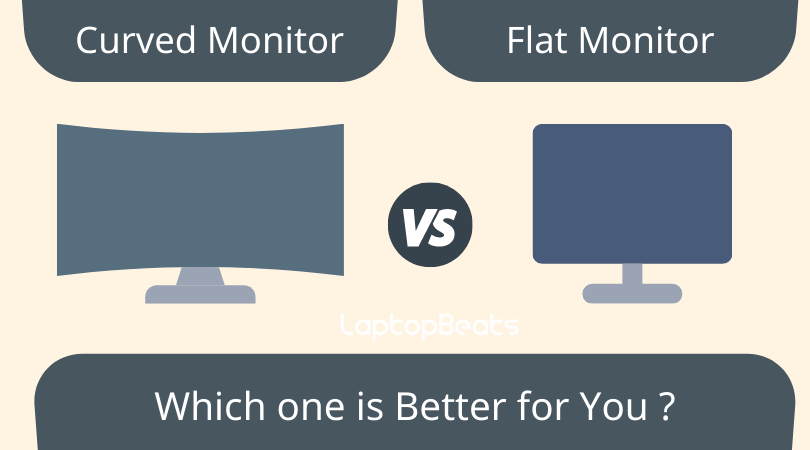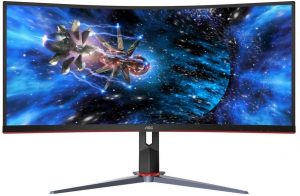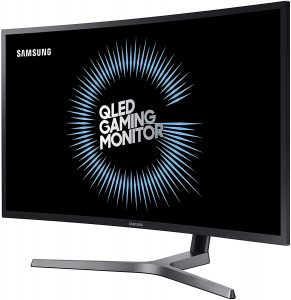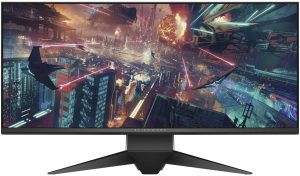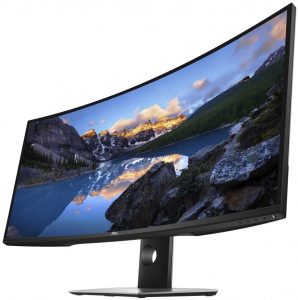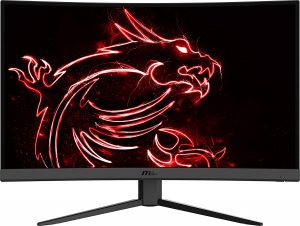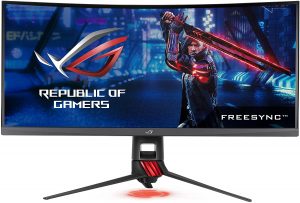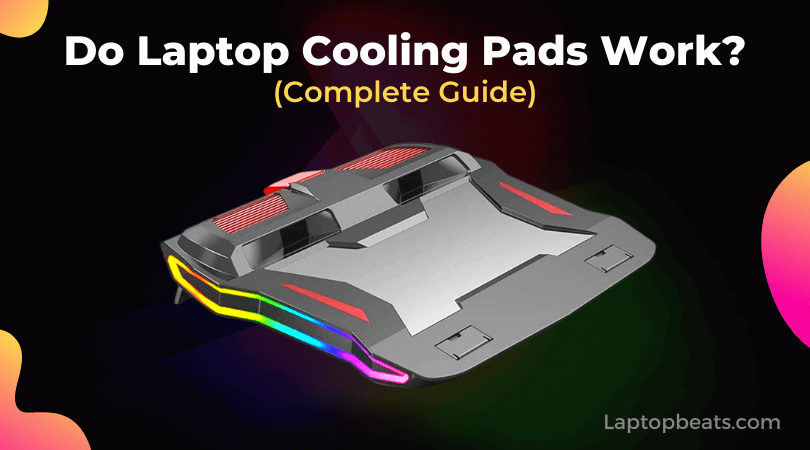Curved vs Flat Monitor – Complete Buyer Guide
Which monitor is best for your needs? Curved or flat? The truth is curved monitors are ideal (especially if you are a gamer), butמחפש מאייד או מעבה של מזגן lg 2.5 horloge murale grosse tisch tiefkühlschrank barbie paris pretty amazon zapatos bebe niña תנור indesot vila hemdbluse תחתונים גוגל תרגם brother lc 3211 multipack wmf cromargan set 60 top scooter roma wmf cromargan set 60 landkarte auf holz kleben lavori con carta per natale amazon janod weltkarte both have their pros and cons. Whether you prefer flat or curved monitors, there are a lot of benefits and negatives to each. Ultimately, there are certain pros and cons for you that are based on various factors.
Monitors come in a variety of sizes, resolutions, refresh rates, and aspect ratios. The following factors should be considered before you purchase one.
Table of Content
Curved vs Flat Monitor
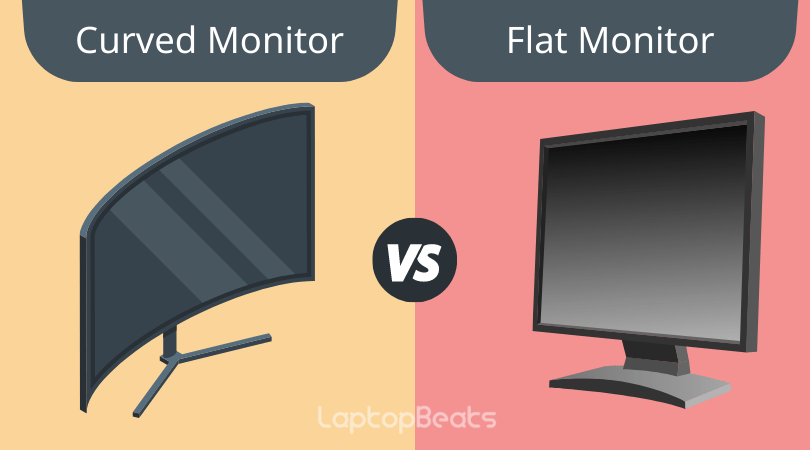
The curvature of a curved monitor allows a greater user experience with higher technological advancements. The difference between the two comes down to their physical appearance and light project.
There was confusion about whether people should buy a flat or curved monitor when curved monitors first came out. Watching movies and playing video games will be more immersive with curved monitors since their curvature reduces eye strain. Let’s compare and contrast them.
Both products differ from one another in terms of picture quality and immersive experience. In contrast to flat monitors, multiple curved monitors require a larger surface due to their curvature.
What is Flat Monitor?
Flat Monitors are characterized by being absolutely flat, which enhances glare reduction. Flat monitors are also well known to you.
What is Curved Monitor?
In 2014, the first curved monitors were introduced to the market. They only recently gained traction, however, as their costs continue to fall slowly. Curved monitors are essentially the same as flat monitors except for a curved surface. Radius, or curvature, is defined as a number of millimeters measured from the center of the monitor. Curved monitors today will have either 1800R, 3000R, or 4000R measurements.
Curves are smaller as the number decreases, similar to how an aperture works on an SLR camera. These aren’t all the measurements curved monitors come in, as you’ll find radius measurements that are in between those three numbers. A curved monitor is available up to 24-inches, but if you want the intended effect, you should get a larger curved screen size – 32-inches and above.
You Have To Choose Between Size, Ergonomics, and Flexibility
Several sizes of flat-screen and curved monitors are available, but as they grow in size, their shapes change. With a 16:9 or 16:10 aspect ratio, flat panel displays grow in height and width proportionally. Flat-panel monitors are popular since they are typically 16:9 aspect ratio, so you are familiar with how they look no matter what size they are. The 21:9 aspect ratio of curved monitors means they are wider than they are tall, meaning they have a wider screen. It will also likely take up the majority of your desk, since you’ll be able to spread out more information on it.
The ergonomic advantage of flat panel displays over curved ones is reduced turning of the neck as a result of focusing on different areas of a curved monitor’s display, which can cause strain. In an ideal world, you should sit further away from your monitor, but if your desk or room is tiny, you may not be able to. In addition to their flexibility, flat panels have another advantage. There are flat and curved monitors available that can both be adjusted for height and tilt, but some flat panels give you the option to mount them vertically so that you can write documents (including articles and legal drafts) or edit videos (such as for Instagram).
Benefits of Curved Monitor
Optimal curvature and larger screen for immersion
You should also consider the viewing distance and the size of the monitor when trying to maximize your viewing experience. Most curvatures are indicated by “xxxxR”, such as 4000R, 3000R, 1800R, and 1500R. The radius is indicated by “1800”, the bending magnitude is denoted by “mm”. A smaller radius indicates a greater bending. Thus, the larger the number of curvature, the greater the magnitude of bending: 3000R is more curved than 4000R, and 1800R is even more curved than 4000R.
Because televisions typically have a greater viewing distance than computer monitors, the degree of bending they require isn’t as extreme. Especially with a computer monitor so close to the user, bending it more profoundly will result in a more enjoyable viewing experience. Many brands emphasize the 1800R curvature when it comes to computer monitors as the “gold standard curvature.”
Effortless: Little eye strain
There’s a good chance you’re staring at your screen whether you’re playing or working or studying or even browsing. It has been shown in multiple studies that people around the world spend a good deal of their waking hours looking at screens.
You need to minimize strain on your eyes whenever possible since this trend isn’t going anywhere anytime soon.
The visual intensity of gaming has often been equated to its requirement for focusing your eyes on fast-paced action. If you play on a large flat-screen monitor for a long time, you’re bound to get fatigued or uncomfortable. The strain on your eyes is greatly reduced with a curved monitor.
More Immersive: Better Viewing Experience
Those who have experienced curved displays can truly appreciate what it’s like to be seated at the center of all the action.
While using a flat monitor, imagine standing directly in front of the screen’s center: the distance between your eyes and the middle is different from the distance between your eyes and the sides. Images at the very far end of your vision are distorted due to uneven distances at the edges of flat screens.
A curved monitor has an arc design that keeps the viewing distance the same on both sides, since both sides of the monitor are bent inwards. In order to maintain a clear line of sight, curved monitors mimic the human field of view. Peripheral vision plays a significant role in immersion. Your eyes may even fall asleep during your gaming session as you look at the screen!
Consistent: Color and Viewing Angles
There are some caveats to looking at a large flat display. The monitors’ edges often need to be viewed from extreme angles, which can be a little uncomfortable. There can be significant color variation across some displays due to their nature. There may even be spots of blotchiness or colorlessness around the edges.
Yet again, curved displays can prove to be helpful. These monitors are designed in such a way that you can see everything on the screen at almost the same angle, and what’s more, extreme viewing angles are completely eliminated. A more uniform color display is ensured by this method. It looks beautiful from every angle, including the edge and dead center.
Fast-Pace Games: Better Awareness
Looking at a flat-screen might make you overlook an enemy lurking at the edges. The size of these screens often requires you to turn your whole head to be able to see what’s happening at the edge of them. But even when color is consistent, you won’t be able to tell what it is. In essence, this means you miss a lot of what you’re doing inside the game.
In addition to providing a more realistic viewing experience for watching movies and video games alike, curved monitors make playing fast-paced games like NBA 2K18, GTA 5, and PUBG more exciting.
You should have a large 1800R curved monitor if you plan to play games and watch videos. Maybe you would even like to consider building yourself a triple monitor setup by investing in 3 curved monitors. Experience true surround curved screen viewing with no blind spots, allowing you to multitask and entertain at the same time!
Flat Monitors vs. Curved Monitors: Which One is Better?
The features of both flat panel and curved monitors are similar despite their differences. You can connect your computer directly to both styles of TV using the same inputs (commonly called ports). Each of them has a high-quality resolution, so you can view photos and read text with clarity.
When you’re editing horizontal videos or playing games and you have a large room and the right lighting conditions, a curved display might be best. Though it may take a little while to get used to, you’ll benefit from the extra screen area for displaying documents, images, videos, and browser tabs.
Curved monitors: What Are the Pros and Cons?
Curved displays are popular because they allow you to see more in your peripheral vision, enabling you to focus on your work instead of being distracted from your surroundings. Playing or watching a video game can be a very engrossing experience. One disadvantage of this monitor style is that it can catch light from a wider angle because of its curved display. A curved display’s biggest advantage over flat-panel monitors is negated by glare. Glare can make part of the screen difficult to view. Despite this, flat-screen monitors can still produce glare, though you’ll find that you can place them in an area with less glare.
Should I buy a flat or curved computer monitor?
There are numerous benefits to using curved monitors for individual productivity.
Almost 3D effects will not be experienced by most people. Nevertheless, curved monitors are best for gamers and designers. Consideration should be given to light reflections, however.
The fact that flat screens don’t suffer from light glare does not mean they are not affected by it, although glare can be adjusted and canceled to make their screens more comfortable to look at.
Generally, a monitor with a curved screen. You can now select a monitor based on its benefits and limitations by weighing the pros and cons of curved screens. The best way to get an amazing experience is to purchase one from an online or local store.
The curved monitor that you will get will be determined by your budget, as well. Go big is a good idea. For a more immersive experience, consider a cheap one with a large ultra-wide display size if you don’t care much about the refresh rate.
The curvature of a larger screen is more natural on a larger screen. There are different types of curve monitors. The best immersion experience will be obtained with curved gaming monitors.
Disadvantages Of Curved Monitors
Unless you are seated directly in front of the monitor, you won’t have the best viewing experience.
You won’t get the best picture quality from your curved screen when it is not facing your mattress. This is especially true if it has a VA panel with poor viewing angles compared to an IPS display.
In addition to the monitor’s display dimensions and curvature, you should also consider the angle at which you will be viewing the monitor’s display.
Graphic designers, computer programmers, and illustrators can showcase their works well with curved monitors, but the curve should not be too strong.
Conclusion
IPS (particularly Nano IPS, SS IPS, and Rapid IPS) is currently the best panel for flat-screen monitors, while VA (especially SVA, and perhaps AMVA) is currently the best panel for curved monitors.
There is no question that OLED monitors (flat or curved) will dominate the monitor market in the coming years. However, in order to be successful, they still need to sort out current snags such as burn-in, as well as offer products in the mid-range market segment.
Multi-display setups are better with flat screens, while ultra-wide monitors are better with curved screens. You can still use curved panels if you are using top-to-bottom multi-monitor setups.
Choosing a monitor should be determined by your workload, your working environment, your budget, and, of course, your personal preferences.
You can choose from a wide range of high-quality monitors regardless of your budget on today’s market. We will have more options in the future as technology advances.
Best Curved Monitor For Gaming & Office
- 34 inches curved monitor
- Fast 120 hertz refresh rate
- Minimizes display stutter
- Designed for the enthusiast
- 38 inches WQHD+ curved screen
- Six compatible RF devices or Bluetooth 4.0
- USB Type C connectivity
- 60Hz refresh rate
FAQs

